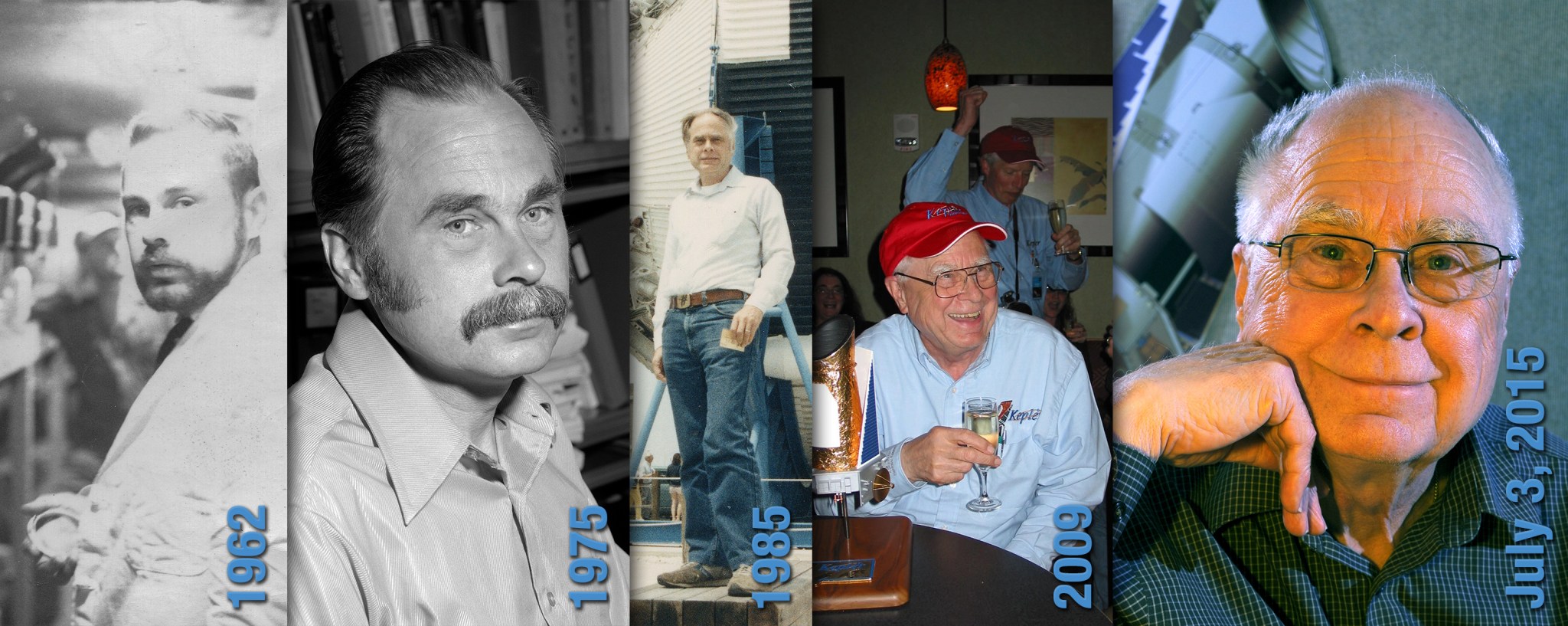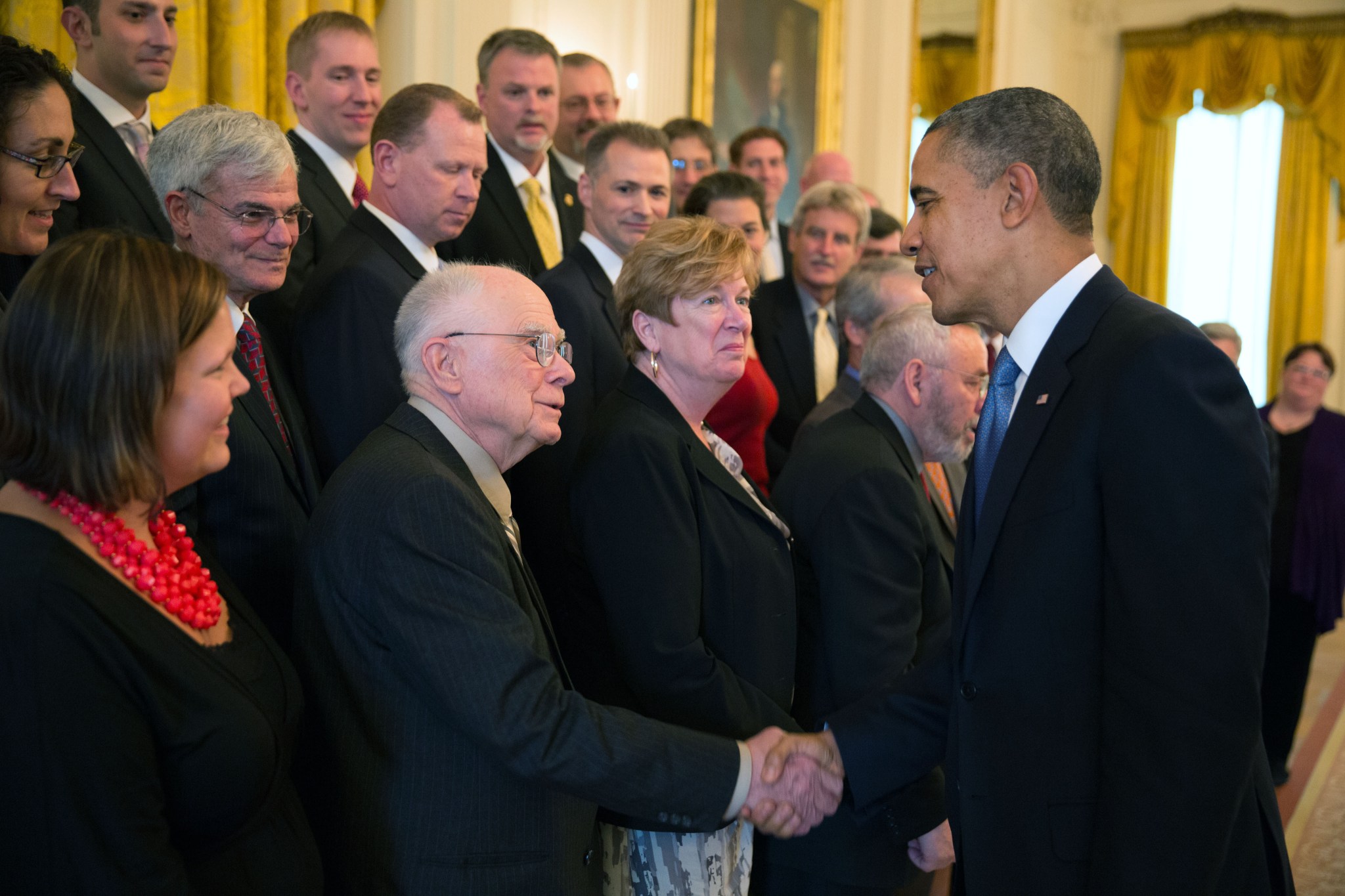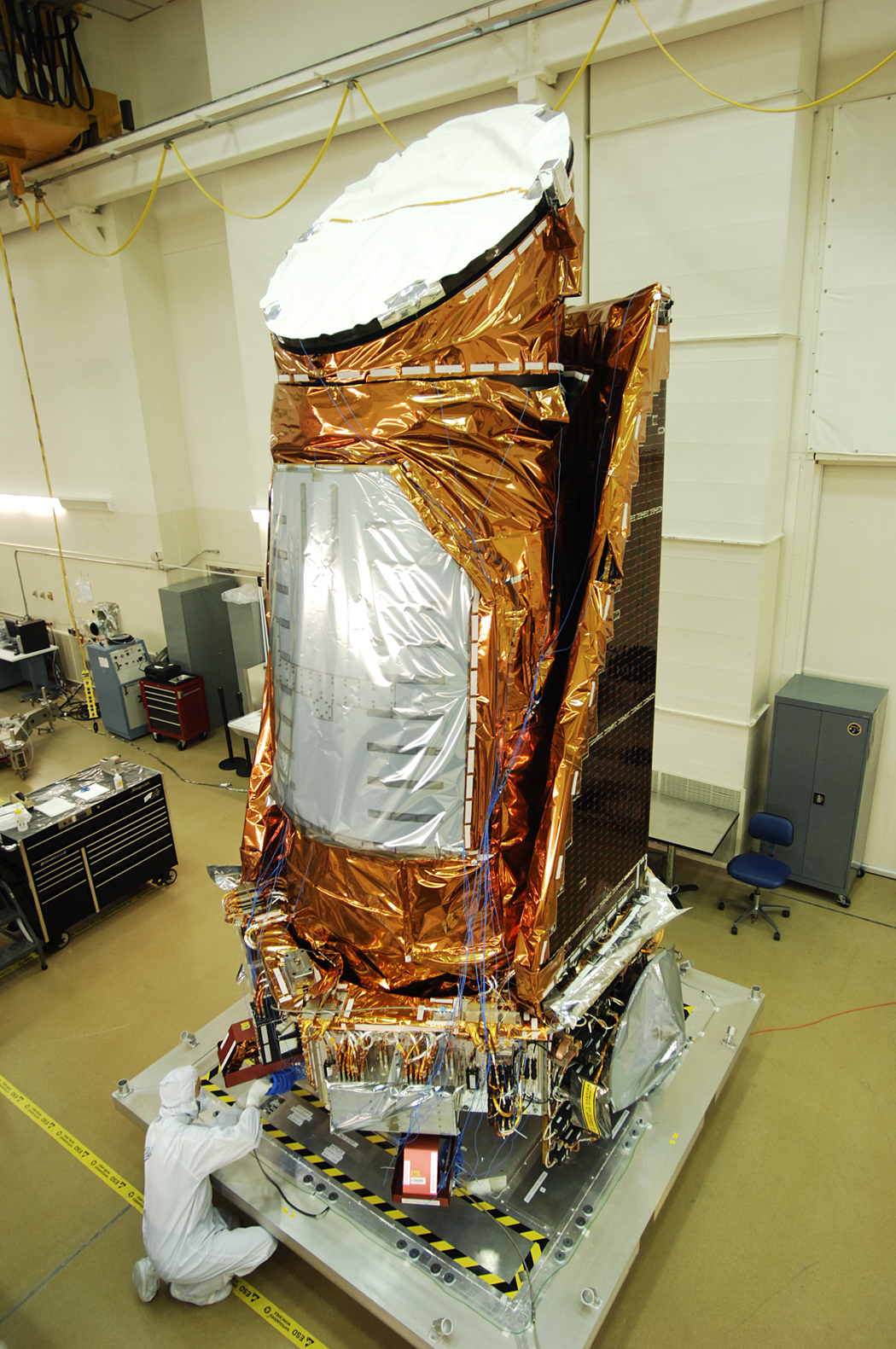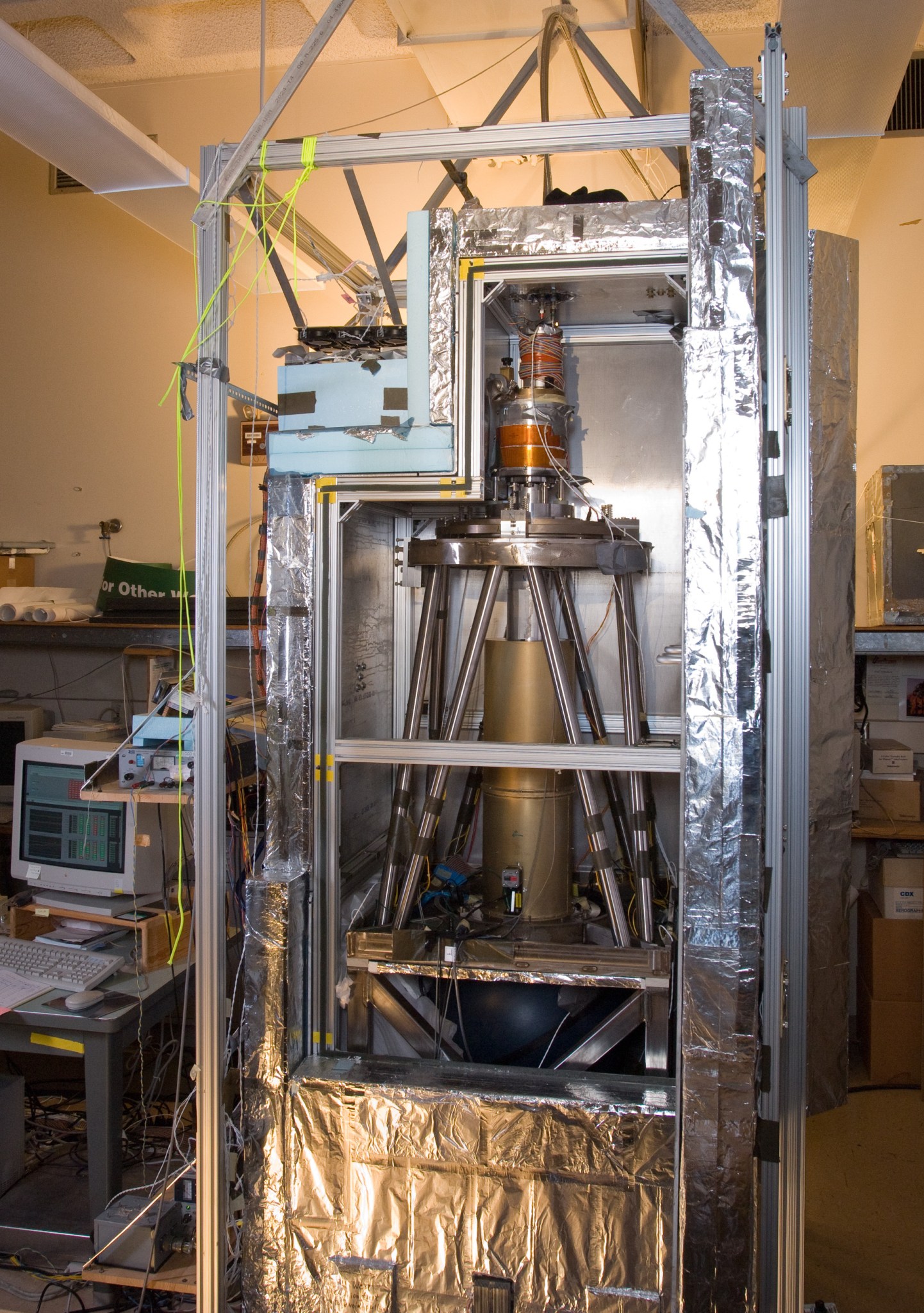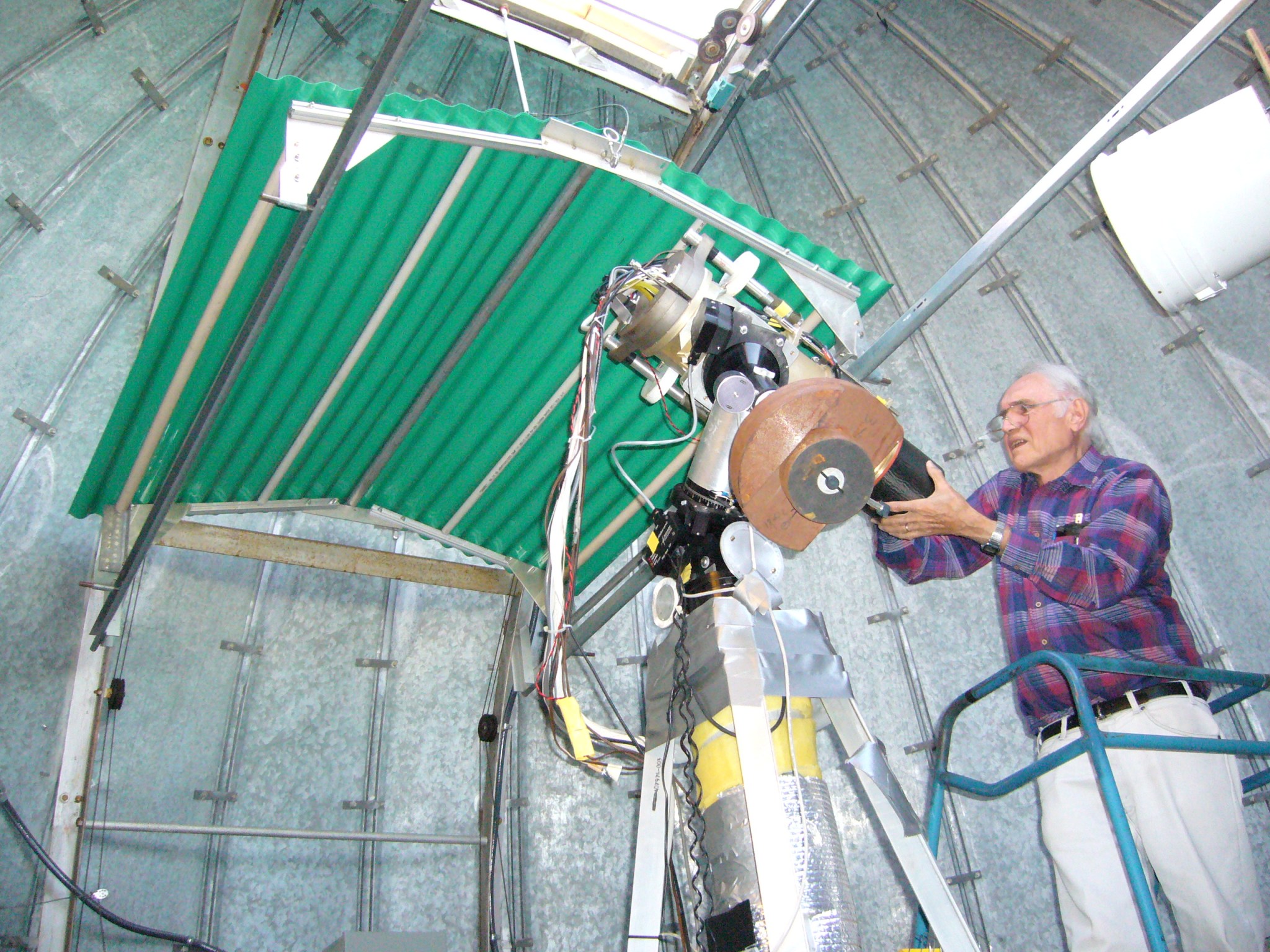15-024AR
After a career spanning 53 years and championing a mission deemed impossible for decades, William Borucki, the principal investigator of NASA’s planet-hunting Kepler mission, will retire from the agency on July 3.
Borucki’s civil service at NASA’s Ames Research Center in Moffett Field, California, culminated with the development and launch of NASA’s first mission to detect Earth-size planets around other stars in the habitable zone — the range of distances from the host star where liquid water might exist on the surface of an orbiting planet. Since its launch in March 2009, Kepler has made scientists and enthusiasts alike reimagine the possibilities for life in the galaxy.
“Bill’s unique leadership, vision, and research tenacity has and will continue to inspire scientists around the world,” said John Grunsfeld, astronaut and head of the NASA Science Mission Directorate at the agency’s headquarters in Washington. “He retires on such a high note that he leaves a legacy of inquiry that will not only be celebrated, it will be remembered as opening a new chapter in the history of science and the human imagination.”
Kepler has shown that most stars have planets and that small planets like Earth are common in our Milky Way galaxy. This result has rewritten textbooks and has revised our understanding of our place in the cosmos, and was made possible through the sheer determination of Borucki and fellow team members.
In a lesson for science dreamers and future principal investigators, it took five proposals spanning a decade for Borucki and colleagues to prove the efficacy of transit photometry for discovering Earth-size planets around sun-like stars.
The first proposal in 1992 was rejected because suitable detector technology was believed to be unavailable. In 1994, concerns over the cost of the mission resulted in the second proposal rejected.
In 1995, support for Borucki and the team came in the form of the first discovery of an exoplanet around a star like our sun. This discovery proved the suitability of current detector technology. The third proposal in 1996 was met with rejection as the technique of automatically observing and measuring thousands of stars simultaneously had never been done before, and observations such as Kepler was proposing could be risky.
In response to this concern, the team built an observatory at the Crocker Dome at Lick Observatory on Mount Hamilton, east of San Jose, California. Using a specially designed telescope, called Vulcan, the team demonstrated thousands of stars could be measured simultaneously.
After a rejection in 1998 due to concerns of the instrument’s ability to perform in the harsh environment of space, Borucki and colleagues built a test-bed facility to demonstrate Kepler’s design stability and sensitivity. With the final concerns addressed, the mission once deemed impossible was accepted in 2000.
“Those were joyful days of hard-earned celebration to be sure, but Bill wasn’t one to pat himself on the back. The qualities that kept him moving forward in the face of rejection were the same qualities that kept him focused on the job ahead,” said Natalie Batalha, Kepler mission scientist at Ames. “To me, Bill embodied the essence of NASA — the childlike spirit of discovery, the tireless work ethic, and the playful tinkering and risk-taking that leads to bold innovation.”
Acknowledging Kepler’s achievements, Borucki was recently awarded the esteemed Shaw Prize in Astronomy 2015 for conceiving and leading the Kepler mission, which greatly advanced knowledge of both extrasolar planetary systems and stellar interiors. This $1 million award capstone is on top of recognition from U.S. President Obama and many prestigious national space and science foundations.
During the first 10 years of Borucki’s career, he worked on the challenge of getting astronauts to the moon and safely returning them to Earth. He conducted laboratory and theoretical studies of the radiation environment of vehicles reentering Earth’s atmosphere. The results of the investigations were used in the design of the heat shields for the Apollo program.
After the successful moon landings, Borucki spent the next 12 years studying Earth’s atmosphere and lightning activity in planetary atmospheres. He developed models of Earth’s atmosphere that estimated the changes in Earth’s ozone layer. He also built a lab facility to produce lightning discharges in simulated atmospheres of Jupiter, Venus and Titan.
In 1983, Borucki began working on what would be approved 17 years later as Kepler with its selection as the 10th Discovery class mission.
The Shaw Prize is the latest in a series of acknowledgments that Bill or the Kepler team have received. These include the:
- 2015 Shaw Prize in Astronomy, Shaw Foundation
- 2015 Trophy for Current Achievement, National Air and Space Museum
- 2015 NASA Ames Fellow
- 2014 Robert H. Goddard Memorial Trophy, National Space Club
- 2013 Space Award, The World Technology Network
- 2013 Career Achievement Award, Samuel J. Heyman Service to America Medals given by U.S. President Obama
- 2013 Exceptional Scientific Achievement Medal, NASA Honor Award
- 2013 Henry Draper Medal, National Academy of Sciences
- 2012 Nelson B. Jackson Aerospace Award, National Space Club; Kepler Team
- 2012 Vision to Reality Award, Space Frontier Foundation
- 2012 Maria and Eric Muhlmann Award, Astronomical Society of the Pacific; Kepler Team
- 2012 Space Science Award, American Institute of Aeronautics and Astronautics; Kepler Team
- 2012 George W. Goddard Space Science Award, SPIE
- 2012 John L. “Jack” Swigert, Jr., Award for Space Exploration, Space Foundation
- 2012 Laureate Award for Space, Aviation Week
- 2011 Lancelot M. Berkeley Prize for Meritorious Work in Astronomy, American Astronomical Society
- 2011 Public Service Leader of the Year, Harvard Club of San Francisco
- 2011 Professional Award, Astronomical Association of Northern California
- 2010 Outstanding Leadership Medal, NASA Honor Award
- 2010 NASA Software of the Year Award, NASA Software Advisory Panel
- 2010 Systems Engineering Excellence Award, NASA’s Office of the Chief Engineer
- 2010 Group Achievement, NASA Honor Award; Kepler Team
- 2009 Breakthrough Award, Popular Mechanics
- 2005 Scientist or Researcher, Ames Honor Awards
- 2000 Group Achievement Award, NASA Honor Award; Astrobiology Team
- 1999 Superior Accomplishment, NASA Ames Award; Vulcan Project
- 1998 Group Achievement Award, Cassini Program Huygens Atmospheric Structure Instrument Team, NASA
- 1987 Excellence for Center Productivity, Quality, and Safety Award, NASA Ames
- 1967 Apollo Mission Achievement Award, NASA
“My greatest honor has been the opportunity to develop and lead the Kepler mission. It showed the galaxy is full of Earth-size planets orbiting in the habitable zone of other stars. New and more powerful missions will tell us if the galaxy teems with life,” said Borucki. “I hope that young people the world over will take up the challenge to explore our galaxy and will build missions to continue our search for life and to find our place among the stars.”
Borucki leaves behind a legacy of thousands of exoplanet discoveries and a treasure trove of data for generations of professional, amateur and aspiring scientists to continue the search and uncover the myriad of worlds that await discovery. Data collected from Kepler are available to the public through the Mikulski Archive for Space Telescopes, the NASA Exoplanet Archive and, for citizen scientist keen to join the search, PlanetHunters.org.
Though Borucki will rejoin the NASA family in August as a volunteer Ames Associate where he will continue studying exoplanets and planetary system formation, this week marks his last as a civil servant and the principal investigator for Kepler.
Borucki will be available for news media interviews from 10 a.m. to 12 p.m. PST on Thursday, July 2. To schedule an interview in this time, contact Michele Johnson at michele.johnson@nasa.gov.
For more information on Borucki and the Kepler mission, visit:
www.nasa.gov/mission_pages/kepler/team/william_borucki.html
and
Media contact:
Michele Johnson
Ames Research Center, Moffett Field, Calif.
650-604-6982
michele.johnson@nasa.gov



























